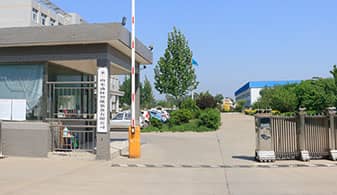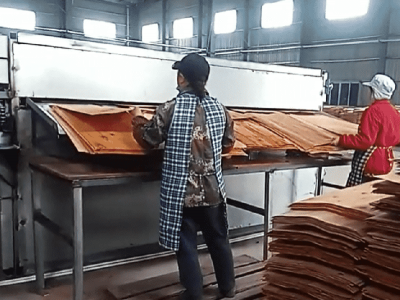Shine Wood Revolutionizes Veneer Drying with High-Density, High-Efficiency Technology
Shandong, China – In an era where global manufacturing is grappling with the dual challenges of maximizing efficiency and minimizing spatial and environmental footprints, a breakthrough from China’s wood processing machinery sector is setting a new benchmark. Shine Wood Machinery Co., Ltd., a name long associated with robustness and reliability in timber processing, has launched its next-generation Veneer Drying Machine—a system engineered not merely to dry wood but to redefine the very economics of production floor space. This innovative dryer promises and delivers a staggering increase in output within the same, or even smaller, factory areas, directly addressing one of the most pressing constraints for modern manufacturers.
The core of this revolution lies in a sophisticated multi-domain approach. Shine has moved beyond simply scaling up traditional designs. Instead, it has pioneered an integrated system that combines vertical high-density racking, AI-driven airflow and temperature control, and a revolutionary energy-recirculation mechanism. The result is a dryer that doesn't just process veneer faster; it processes more veneer simultaneously, with unparalleled uniformity and significantly lower energy consumption per sheet.
The Spatial Dilemma in Modern Veneer Production
To understand the significance of Shine's achievement, one must first appreciate the "spatial dilemma" facing the plywood, furniture, and flooring industries. Veneer drying is a critical, yet space and time-intensive, stage in production. Traditional conveyor dryers or older chamber dryers can stretch for dozens of meters, occupying vast tracts of valuable factory real estate. As companies seek to expand production to meet growing global demand, the option to simply build larger factories is often prohibitively expensive, logistically complex, and environmentally unsustainable.
"The constraint for many of our clients is no longer the market demand for their finished products, but their internal capacity to process raw materials," explains Chief Technology Officer at Shine Wood. "A factory might have the potential to double its plywood output, but if the drying line is 100 meters long and requires a dedicated building, that potential is strangled at birth. We asked a fundamental question: what if we could make the drying process not just faster, but denser? What if we could turn a linear process into a volumetric one?"
This line of inquiry led to half a decade of intensive Research and Development, culminating in the Shine High-Density Veneer Dryer (HDVD).
Deconstructing the Innovation: A Multi-Faceted Engineering Marvel
The Shine HDVD’s superior performance is not the result of a single feature, but the synergistic effect of several groundbreaking technologies.
1. The Vertical Stack Racking System: Building Up, Not Out
The most visually striking departure from convention is the dryer's internal racking system. While traditional dryers often use single-layer conveyor belts or widely spaced carts, the HDVD employs a high-strength, vertically stacked racking system, akin to a highly organized, multi-story parking garage for veneer sheets.
Multi-Tier Loading: The system can accommodate up to eight tiers of veneer carts within the same footprint that a conventional dryer might use for two or three. This immediately multiplies the loading capacity by a factor of three or four.
Precision-Guided Carts: Specially designed, low-profile carts are loaded with veneer and then seamlessly slotted into the vertical racks by an automated handling system. The precision engineering ensures consistent, minimal gaps between stacks, optimizing the use of every cubic centimeter of the drying chamber.
Structural Integrity: The racking is constructed from advanced, heat-resistant alloys that maintain their structural integrity under continuous thermal cycling, ensuring long-term safety and reliability.
"This vertical integration is the cornerstone of our space-saving philosophy," says a lead design engineer at the Shine production facility. "We are no longer limited by the two-dimensional plane of the factory floor. We are actively and efficiently utilizing the full volume of the drying chamber. It’s a simple concept in theory, but its execution required solving complex problems in heat distribution and mechanical handling."
2. AI-Optimized 3D Aerodynamic Airflow
Densely packing veneer creates an immediate challenge: ensuring that heated air reaches every sheet, in every corner, with absolute uniformity. In a poorly designed dense system, the center stacks could remain damp while the outer ones become brittle and over-dried. Shine has overcome this with a proprietary AI-Optimized 3D Aerodynamic Airflow system.
Dynamic Nozzle Arrays: Instead of fixed vents, the HDVD uses an array of adjustable, high-velocity nozzles positioned on the ceiling, walls, and even within the vertical racks themselves. These nozzles can be individually controlled to direct airflows.
Real-Time Sensor Network: A network of hundreds of sensors continuously monitors temperature and humidity at dozens of critical points within the chamber—from the top-tier cart to the bottom, from the air inlet to the exhaust.
The AI Brain: The data from the sensor network is fed into an AI processing unit. This software model, trained on thousands of drying cycles for different wood species and thicknesses, dynamically adjusts the nozzle angles, fan speeds, and damper positions in real-time. It creates a turbulent, yet perfectly controlled, "air storm" that penetrates deep into the stacks, ensuring every wood veneer sheet receives the same optimal drying conditions.
"This is where we move from brute-force drying to intelligent drying," Dr. Li states. "The AI doesn't just react; it predicts. It understands that when the bottom rack reaches a certain humidity level, the airflow pattern must shift to maintain equilibrium. This guarantees a final moisture content variance of less than ±0.5% across the entire batch, a level of consistency previously unimaginable in a high-capacity dryer."
3. The Closed-Loop Energy Recirculation System
High-density drying, if done with traditional methods, would come with an exorbitant energy cost. Shine’s Closed-Loop Energy Recirculation System turns this notion on its head, making the HDVD not only space-efficient but also exceptionally energy-efficient.
Humidity-Controlled Exhaust: In conventional dryers, hot, moisture-laden air is simply vented out, taking with it a massive amount of thermal energy. The HDVD uses smart exhaust valves that only open when the internal humidity crosses a specific, optimized threshold.
Heat Recovery Units: The moist air that is exhausted is first passed through a series of high-efficiency cross-flow heat exchangers. Here, up to 80% of the thermal energy is captured from the exhaust stream and transferred to the incoming fresh air.
Internal Recirculation: For the majority of the cycle, the system operates in a near-closed loop, constantly recirculating and re-heating the internal air. This drastically reduces the demand on the primary heating system—be it steam, thermal oil, or electric.
"The energy savings are profound," notes a project manager who oversaw the installation at a major plywood mill in Southeast Asia. "Our client reported a 45% reduction in their energy consumption per cubic meter of dried veneer compared to their previous system. When you combine that with a 300% increase in throughput per square meter of floor space, the total operational cost savings are transformative."
Quantifying the Impact: From Technical Specs to Bottom Lines
The theoretical advantages of the Shine HDVD are compelling, but the real-world data solidify its status as a game-changer.
Spatial Efficiency: A standard model HDVD can process over 50 cubic meters of veneer per cycle in a chamber that occupies less than 80 square meters of floor space. A traditional dryer with comparable output would require over 250 square meters.
Throughput Speed: Enhanced heat transfer from the 3D airflow reduces average drying times by 15-25%, depending on the species. This means the high-capacity chambers are cycled through more times per day.
Quality and Yield: The unparalleled drying uniformity drastically reduces defects like case-hardening, warping, and cracking. This leads to a higher yield of Grade-A veneer, directly improving the profitability of every batch.
Return on Investment (ROI): While the initial capital outlay for an HDVD is higher than for a conventional dryer, the ROI period is remarkably short—often between 12 to 24 months. This is driven by the combined savings from reduced energy costs, lower labor requirements (due to automation), increased output, and higher product quality.
Case Study: Transforming "Plywood Park," Vietnam
One of the most telling testimonials comes from a large-scale plywood manufacturing complex in Vietnam, aptly named "Plywood Park." Facing soaring export orders and a physically constrained factory layout, they were considering a multi-million dollar expansion to accommodate a new drying line.
After a feasibility study, they opted for the Shine HDVD.
"We were at a crossroads," recalls the plant's operations director. "Building a new wing would have taken 18 months and consumed capital we wanted to use for market development. The Shine solution was installed within three months within our existing structure. We didn't just avoid a massive construction project; we actually freed up space by decommissioning two of our old, lengthy dryers. Our veneer drying capacity increased by 180%, and we did it without pouring a single new concrete slab. It was, without exaggeration, a strategic miracle for our business."
The Broader Implications: Sustainability and Industry 4.0
The implications of Shine's technology extend beyond balance sheets and factory layouts.
Environmental Sustainability: The dramatic reduction in energy consumption per unit of output translates directly to a smaller carbon footprint. For an industry under pressure to become more sustainable, this is a significant step forward. Furthermore, by enabling higher production in existing facilities it reduces the need for new land development and construction, which carries its own environmental cost.
Embracing Industry 4.0: The HDVD is a quintessential Industry 4.0 machine. It is fully connected, capable of remote monitoring and diagnostics, and its AI system continuously learns and improves. It can be integrated into a smart factory ecosystem, receiving production orders directly from the ERP system and providing real-time data on batch status, quality metrics, and machine health.
The Future is Dense and Intelligent
Shine Wood's High-Density Veneer Dryer is more than just a new product; it is a paradigm shift. It demonstrates that the future of industrial manufacturing is not necessarily about building bigger, but about thinking smarter. By conquering the vertical dimension and infusing the process with artificial intelligence, Shine has provided the global wood processing industry with a powerful tool to overcome its spatial and economic constraints.
For manufacturers worldwide looking to scale their operations, enhance their product quality, and solidify their competitive edge in a crowded market, the message is clear: the capacity for growth is no longer just outside your walls—it’s already inside, waiting to be unlocked by thinking in three dimensions. The era of high-density, intelligent industrial processing has arrived.






